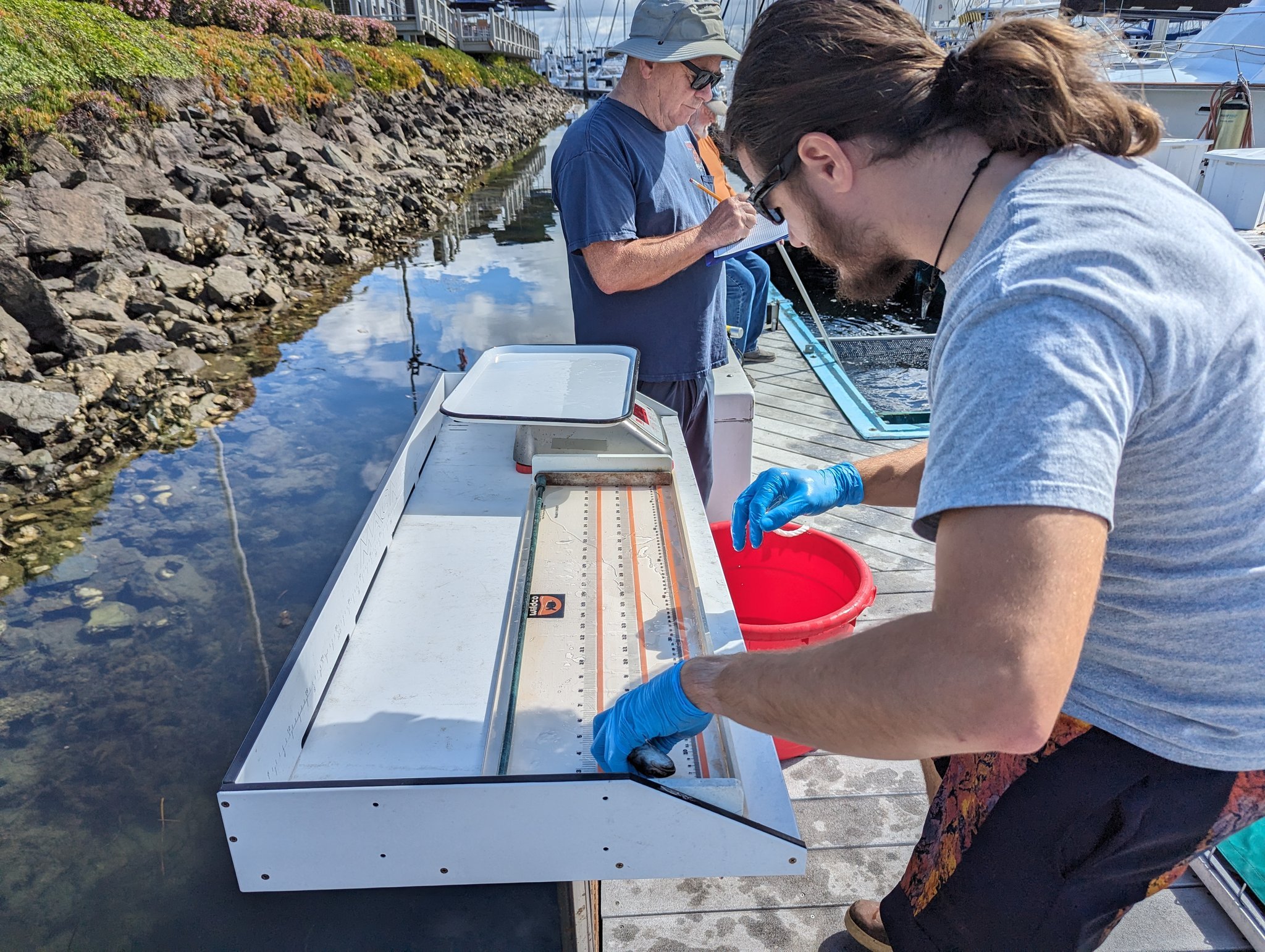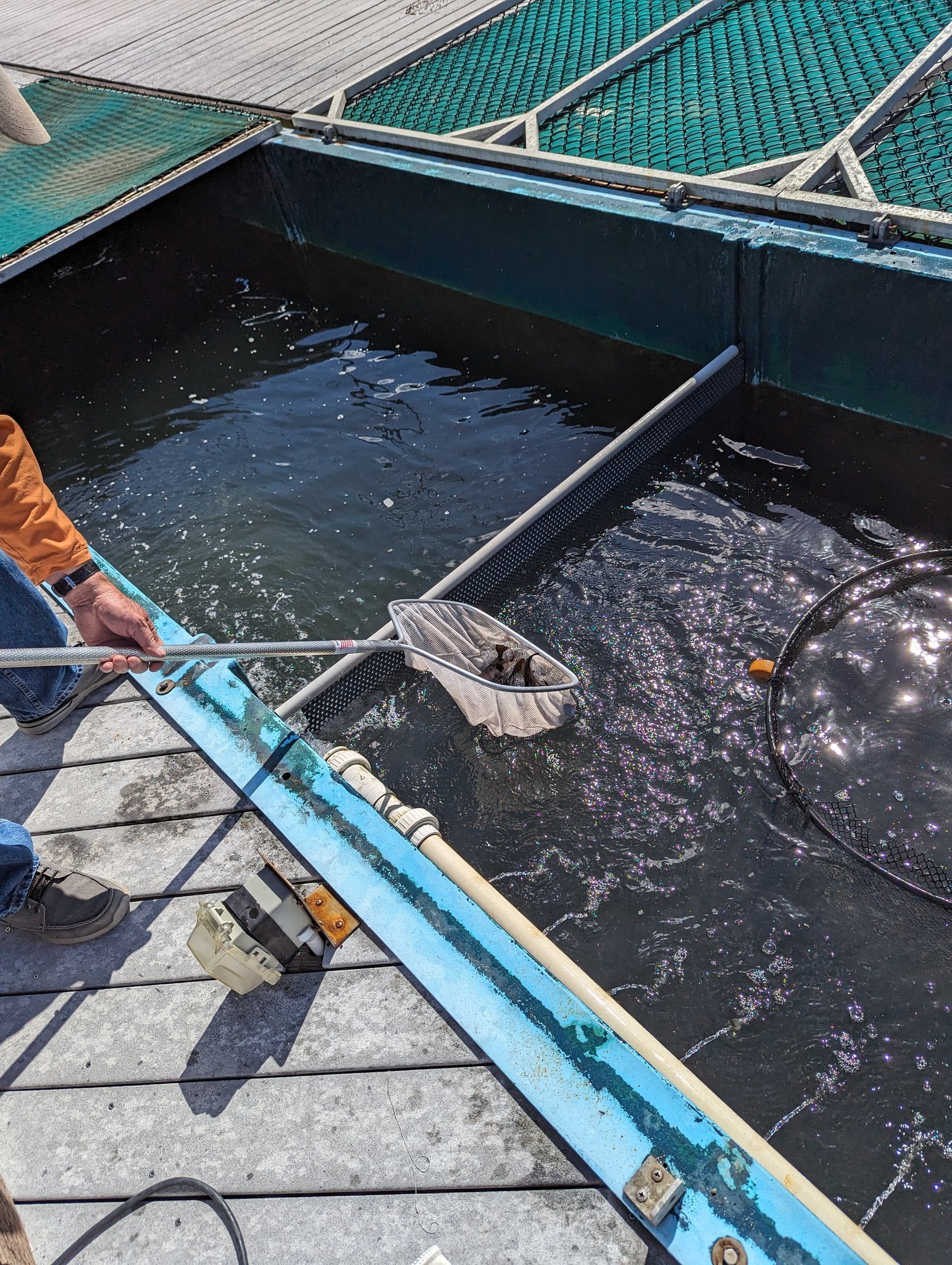White Sea Bass Restoration Project

HISTORY:
In the early 1960’s, to begin restoring fisheries that have been depleted by commercial over-fishing, the use of gillnets, and habitat loss, the California Department of Fish and Game instituted the Oceans Resources Enhancement & Hatchery Program (OREHP). As part of the state‘s new initiative, the Hubbs Sea World Research Institute built an experimental marine fish hatchery in Carlsbad, CA. This pilot project was created in order to determine the feasibility of culturing ecologically respectable white sea bass in captivity as well as to assess the marketability of these fish. The White Sea Bass was selected as the primary target species for this program due to both its popularity on dinner plates and its depleted status.
The funding to support the majority of OREHP‘s stock enhancement research comes from the sale of recreational and commercial fishing licenses.
Your SWYC Anglers Annual Sea Bass Budget: $3,000.00

In April, 2024 We released 1,900.00 healthy fingerlings from the SWYC Grow Out Facility. The project is lead by Larry George for the the last many years.
It is indeed a celebration when our fish are of size and ready to be released into the wild to grow into adulthood and reproduce. SWYC Anglers are proud to be associated with this Marine Life Enhancement Program. We have the highest survival rate of all the White Sea Bass Grow Out Pens.
To support large-scale experimental restocking efforts, the Leon Raymond Hubbard, Jr. Marine Fish Hatchery, in Carlsbad, was constructed and dedicated in 1995. This facility is capable of producing more than 350,000 juvenile white sea bass annually. The hatchery is a unique facility that blends scientific research to improve upon a depleted fishery and broaden our knowledge of the White Sea Bass (croaker) species and its life history.
At the hatchery, HSWRI (Hubbs-Sea World Research Institute) breeds white sea bass and raises them from tiny eggs to fingerling (about three inches long). Juvenile white sea bass go from a diet of brine shrimp to artificial pellets in order to get ready for their time in California Grow Out facilities.
All fish raised by HSWRI are tagged in the cheek with coded metal wires. Fisherman are encouraged to cut off and turn in the heads (at designated locations) of all caught White Sea Bass as the heads provide valuable information with regard to restocking efforts, and survivorship of hatchery raised fish verses non-hatchery raised fish.
Once the fingerlings reach 3 inches in length and are tagged, they are ready to be transported to Grow Out Facilities. Keeping to their natural hunting patterns, our white sea bass are fed every 3 hours, with automatic feeders.
In 3-4 months, the fish nearly quadruple in size; from approximately three inches to almost twelve! (Ten inches is the minimum size for release). Once the fish are released, they are free to grow and reproduce in the wild.


Before release they are counted, visually inspected for abnormalities, and random fin clippings are taken to analyze for bacterial infections. If healthy, authorization is given for release and only healthy fish are released
For the success of this project and the safety of the fish, ongoing general maintenance of these pens is necessary. Divers clean the pens prior to receiving new batches of fingerling. Automatic feeders, pumps, and general equipment have to be maintained and replaced, as needed. Tanks are removed for repair and maintenance as required.
As of 2014, our Marine Life Enhancement Program is currently managed by SWYC Anglers Gene Geiger, Larry George and Robb Lane. When fish are received, as well as when they are released, several anglers volunteer their time to assist this process, to help ensure safe handling of our white sea bass.
When we have fish in our pens they must be maintained and monitored daily. As a result, we have people we employed to provide that service. As needed, chain link tops are replaced on each of the 3 gates. Our last chain link replacement was provided by Angler Tom Miller. Canvas tops are attached to the gates to protect the fish and they are replaced as needed.

